Overview
Map
Other Details
كنيسة مار نهرا
Smar Jbayl
Batroun
North
كنيسة مار نهرا - سمار جبيلكنيسة مار نهرا التي تُعتبَر من اقدم الكنائس في الشرق، تعود الى القرن الثالث بعد المسيح، وهي تحمل شفاعة مار لوجيوس أي نوهرا الذي إستشهد في قلعة سمار جبيل القريبة منها بحسب التقليد.أوّل ذكرٍ لهذه الكنيسة ورد باللغة السريانية في كتاب إنجيل موجود في المكتبة الماديشية في فلورنسا. الكنيسة مبنيّة على مراحل من بقايا حجارة هيكلٍ وثنيٍّ قديم. وقد اصبحت هذه الكنيسة محجَّةً للَّذين يطلبون شفاعة مار نهرا، شفيع العيون.ونرى فوق مدخل الكنيسة الرئيسيّ سلسلةً حجريّةً معلَّقةً، من صنع الياس الخوري وهي مؤلفة من كتلة حجريّة واحدة.في الكنيسة نقوشًا مضغوطة في الكلس. في القسم الشماليّ الخارجيّ وهو قسم الموعوظين نجد بقايا نقوش من الهيكل الوثنيّ وبئر لتجميع الماء.المذبح الكبير في الكنيسة تحفة فنيّة أمر به البطريرك بولس مسعد، من عمل المعلّم الياس بربري الحلبيّ ٢٠ تمّوز ١٨٧٠.يعلو المذبح الأوسط صورة زيتيّة لمار نهرا يُعتقد انها لداود القرم. وعلى المذابح الجانبيّة لوحات لداوود القرم: مار باسيليوس ١٨٩٢، السيّدة العذراء ١٨٧٨.كذلك زيتيّتين لكنعان ديب: السيّدة ومار مارون. ولوحة نحاسيّة تمثّل مشهد العماد.مؤخرًا إكتُشف في الكنيسة بقايا جداريّات باتت مجهولة المعالم.St Nohra’s church - Smar JbeilThe church of St Nohra is considered to be one of the oldest churches in the Levant dating back to the third century, and bares the patronage of St Logius, also known as Nohra, who was martyred in the nearby castle according to tradition.The first mention of the church comes from a medieval manuscript of a Bible in the florentine Medicci library.The church was built over different stages. The first stones were begotten from local pagan temples. It was an important pilgrimage site due to its patron, St Nohra, who is considered the patron saint of the eyesight.Above the northern entrance a chain carved from a single stone can be spotted, it was made by Elias el Khoury. Also in the church one can find many limestone engravings.The western exterior part is the narthex with a pagan sculpture and a well.The high altar of the church was commissioned by Patriarch Boulos Masaad, and was finalized in the twentieth of July 1870 by the aleppan Elias Barbary.Above the altar is a painting of St Nohra attributed to Dawoud al Qorm. Above the two side altars are two paintings signed by Dawoud al Qorm: The Madonna 1878 and St Basil 1892.In the church are two older paintings for Kanaan Dib: the Madonna and St Maroun. One can also find a copper engraving depicting the baptism of Jesus.Lately medieval frescoes were discovered in the old part of the church yet they are in bad condition.
Visited 6063 times, 5 Visits today




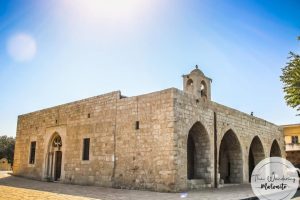
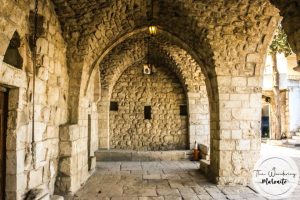
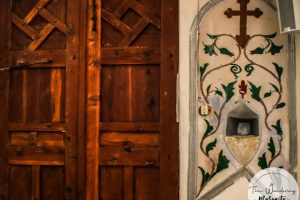

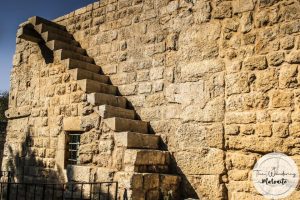

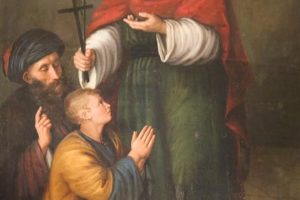
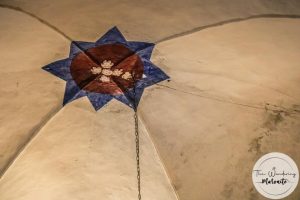

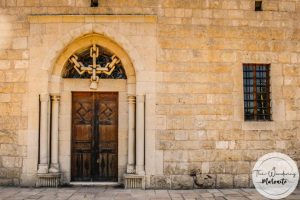
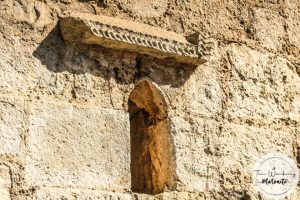













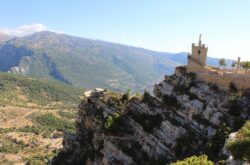


Reviews are disabled, but trackbacks and pingbacks are open.